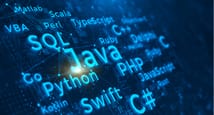- What is this course about?
- Is this course right for you?
- Finding your way around the course
- List of parts
- Two common questions about parts and tools
- How to ask a question
- How to report an error
Arduino Step by Step Getting Serious
Quick Facts
| particular | details | |||
|---|---|---|---|---|
|
Medium of instructions
English
|
Mode of learning
Self study
|
Mode of Delivery
Video and Text Based
|
Course overview
Arduino Step by Step Getting Serious Course is a short certification developed by Dr. Peter Dalmaris to coach the student on the whole range of topics related to Arduino, an electronics learning and prototyping platform. In this course, the learners will be able to delve into the concepts of BME280, MPU6050 motion sensor, Ethernet networking, and many more.
The students who plan to enrol in the Arduino Step by Step Getting Serious Online Course must have basic knowledge of Arduino and basic tools such as a multimeter, wires, a breadboard, an Arduino Uno board, etc. Arduino Step by Step Getting Serious Certification, delivered by Udemy, constitutes multiple examples of code, demonstrations of a completed circuit, 12 hours of retouched video content, wiring schematics, and the like.
The highlights
- Online course
- Downloadable resources
- Full lifetime access
- Access on mobile and TV
- Certificate of completion
- English videos with multiple subtitles
- 30-Day Money-Back Guarantee
Program offerings
- 34 hours on-demand video
- 1 article
- 47 downloadable resources
- Full lifetime access
- Access on mobile and tv
- Certificate of completion
Course and certificate fees
Fees information
certificate availability
Yes
certificate providing authority
Udemy
Who it is for
What you will learn
Through the Arduino Step by Step Getting Serious Online Certification, the learners can learn the communications technologies like Wifi, BLE, and radio, data storage in external storage like SD Cards and EEPROM, the configuration of LEDs, monochrome or colour, display text, graphics, animation, Bluetooth Low Energy, communication with Bluetooth and a lot more.
The syllabus
Introduction to this course
The BME280 environment sensor
- [0490a] Introduction to the BME280
- [0490b] BME280 SPI wiring
- [0490c] BME280 I2C wiring
- [0490d] BME280 Sketch walkthrough and demo
The MPU6050 motion sensor
- [0540a] Introduction to the MPU6050 motion sensor
- [0540b] A look at the MPU6050 datasheet
- [0540c] MPU6050 wiring
- [0540d] MPU6050 Arduino sketch
- [0540e] MPU6050 Processing demonstration
- [0540f] MPU6050 bonus lecture
Compass and magnetometer
- [0590a] Introduction to the HMC5883 compass magnetometer
- [0590b] HMC5883 wiring
- [0590c] HMC5883 sketch
- [0590d] HMC5883 demonstration
The flex sensor and membrane potentiometer
- [0620a] Introduction to the flex sensor
- [0620b] Flex sensor wiring
- [0620c] Flex sensor sketch
- [0630a] Introduction to the membrane potentiometer
- [0630b] Membrane potentiometer demonstration
The rotary encoder
- [0640a] Introduction to the rotary encoder
- [0640b] Rotary encoder wiring and quadrature encoding
- [0640c] Rotary encoder sketch
Keypads
- [0670a] Introduction to the keypad
- [0670b] Working out the keypad pins
- [0670c] Keypad wiring
- [0670d] The phone keypad
- [0680a] Keypad 1-wire connection, Introduction
- [0680b] Keypad 1-wire connection, wiring
- [0680c] Keypad 1-wire connection, sketch
- [0690a] Keypad with the 74922 decoder IC, Introduction
- [690b] Keypad with the 74922 decoder IC, wiring
- [690c] Keypad with the 74922 decoder IC, sketch and demo
- [690d] Bitwise operators
Graphics screen: Using a 1.8" TFT screen shield with joystick and SD card
- [0730a] Introduction
- [0730b] Setup, graphics primitives and documentation
- [0730c] Displaying images from the SD card
- [0730d] Using the joystick and integrated button
- [0730e] How to create your own user interface: make the background image
- [0730f] How to create your own user interface: an example sketch
Graphics screen: Using a 2.2" TFT with SD Card
- [0732a] Introduction
- [0732b] Wiring
- [0732c] Simple demonstrations
- [0732d] Displaying data
- [0732e] The library and resources
2.8 inch TFT display with touch interface and SD card module
- [0735a] Introduction
- [0735b] Setup the IDE
- [0735c] Graphics functions and documentation
- [0735d] Test the touch interface
- [0735e] Test the SD card module
- [0735f] Create a custom user interface image
- [0735g] Create a custom user interface sketch
Graphics screen: using the 128x64 OLED SPI SH1106 display
- [0740a] Introduction
- [0740b] Wiring
- [0740c] Libraries and support
- [0740d] Finding the right constructor for your screen
- [0740e] Demo sketch
8x8 LED matrix display
- [0760a] Introduction
- [0760b] Single display wiring
- [0760c] Single display sketch
- [0760d] Single display drawing
- [0760e] Custom graphics
- [0760f] Animation
- [0770a] Four 8x8 LED matrix display introduction
- [0770b] Four 8x8 LED matrix display graphics primitives
Seven Segment Displays
- [0750a] Introduction
- [0750b] Single display pin role discovery
- [0750c] Single display wiring
- [0750d] Single display sketch
- [0750e] Single display, working out the digit byte array
- [0752a] Single display with a single resistor
- [0752b] The sevseg library
- [0753a] Dual seven segment display, pin discovery
- [0753b] Dual seven segment display, wiring
- [0753c] Dual seven segment display, sketch
- [0754a] Single seven segment display with shift register, Introduction
- [0754b] Single seven segment display with shift register, wiring
- [0754c] Single seven segment display with shift register, sketch
- [0755a] Seven segment clock display - Introduction
- [0755b] Seven segment clock display - pin discovery
- [0755c] Seven segment clock display - wiring
- [0755d] Seven segment clock display - sketch
- [0755e] Seven segment clock display - Demo and wiring correction
- [0757a] Seven segment clock display & I2C backpack - Introduction and wiring
- [0757b] Seven segment clock display & I2C backpack - sketch
- [0757c] Seven segment clock display & I2C backpack - demo and wiring correction
LED strips
- [0810a] White 12V LED strip with the TIP122 transistor, Introduction
- [810b] White 12V LED strip with the TIP122 transistor, TIP122 datasheet
- [810c] White 12V LED strip with the TIP122 transistor, circuit
- [810d] White 12V LED strip with the TIP122 transistor, wiring test
- [0810e] White 12V LED strip with the TIP122 transistor, blinking
- [0810f] White 12V LED strip with the TIP122 transistor, fading
- [820a] RGB LED strip with the TIP122, introduction
- [0820b] RGB LED strip with the TIP122, testing
- [0820c] RGB LED strip with the TIP122, circuit and wiring
- [0820d] RGB LED strip with the TIP122, sketch
Neopixel LED modules
- [0830a] Adafruit Neopixel 5x8 shield, Introduction
- [0830b] Adafruit Neopixel 5x8 shield, Quick setup and demo
- [0830c] Adafruit Neopixel 5x8 shield, Sketch, control single pixels
- [0830d] Adafruit Neopixel 5x8 shield, Sketch, draw graphic primitives
- [0840a] Adafruit Neopixel strip 8 LED, Introduction
- [0840b] Adafruit Neopixel strip 8 LED, Sketch introduction
- [0840c] Adafruit Neopixel strip 8 LED, Circuit and assembly
- [0840d] Adafruit Neopixel strip 8 LED, Sketch walkthrough
- [0850a] Adafruit Neopixel RGBW 30 LED strip, introduction
- [0850b] Adafruit Neopixel RGBW 30 LED strip, Wiring
- [0850c] Adafruit Neopixel RGBW 30 LED strip, Programming and demo
- [0850d] Adafruit Neopixel RGBW 30 LED strip, Sketch walkthrough
DC Motors
- [0899] Introduction to motors
- [0900a] DC motors principles of operation
- [0900b] Motor control with the L298N, wiring
- [0900c] Motor control with the L298N, sketch and demo
- [0903a] Motor control with the L8871, introduction
- [0903b] Motor control with the L8871, Wiring
- [0903c] Motor control with the L8871, sketch and demo
- [0910a] Motor control with the Adafruit Motor Shield v2, introduction
- [0910b] Motor control with the Adafruit Motor Shield v2, Wiring
- [0910c] Motor control with the Adafruit Motor Shield v2, Sketch and demo
Servo motors
- [0930a] Introduction to servo motors
- [0932a] Direct control of a servo motor, wiring
- [0932b] Direct control of a servo motor, sketch and demo with one motor
- [0932c] Direct control of a servo motor, sketch and demo with two motors
- [0933] Define servo motor moves in an array
- [0940] Continuous rotation servo motor
- [0945a] The Adafruit Servo Shield, introduction
- [0945b] The Adafruit Servo Shield, wiring
- [0945c] The Adafruit Servo Shield, Sketch
- [0945d] The Adafruit Servo Shield, Control an LED
Stepper motors
- [0950a] Introduction to stepper motors
- [0950b] Dissecting a bipolar stepper motors
- [0950c] How to determine the coil wires of a bipolar stepper motor
- [0952a] NEMA17 with the L293 controller & Stepper library, introduction & wiring
- [0952b] NEMA17 with the L293 controller & Stepper library, sketch & demo
- [0970a] NEMA17 with the Easy Driver controller, introduction
- [0970b] NEMA17 with the Easy Driver controller, wiring
- [0970c] NEMA17 with the Easy Driver controller, sketch
- [0972a] NEMA17 with the Easy Driver controller & AccelStepper, intro &sketch
- [0972b] NEMA17 with the Easy Driver controller & AccelStepper, demo
- [0975a] NEMA17 with the Adafruit Motor Shield v2 & AccelStepper, intro & sketch
- [0975b] NEMA17 with the Adafruit Motor Shield v2 and AccelStepper, Demo
- [0980a] Unipolar stepper motor with Adafruit Motor Shield, introduction
- [0980b]Unipolar stepper motor with Adafruit Motor Shield, determining coil wires
- [0980c] Unipolar stepper motor with Adafruit Motor Shield, demo
- [0982a] Unipolar stepper motor with the ULN2003 driver, introduction
- [0982b] Unipolar stepper motor with the ULN2003 driver, wiring
- [0982c] Unipolar stepper motor with the ULN2003 driver, sketch & demo
Networking with the ATWIN1500 Wifi module
- [1210a] Introduction to the ATWIN1500 Wifi module
- [1210b] Wiring the Adafruit ATWIN1500 breakout
- [1210c1] Adafruit ATWIN1500 Wifi breakout, simple demo
- [1210c2] Adafruit ATWIN1500 Wifi breakout, sketch walkthrough
- [1210c3] Adafruit ATWIN1500 Wifi breakout, firmware version check
- [1210d1] ATWIN1500 Wifi breakout firmware upgrade
- [1210d2] ATWIN1500 Wifi breakout SSL certificate update
- [1210e1] ATWIN1500 Simple reporting server, wiring
- [1210e2] ATWIN1500 Simple reporting server, sketch
- [1210e3] ATWIN1500 Simple reporting server, demonstration
- [1211a] ATWIN1500 controlling LEDs with a CSV file on Amazon S3, intro
- [1211b] ATWIN1500 controlling LEDs with a CSV file on Amazon S3, Setup S2
- [1211c] ATWIN1500 controlling LEDs with a CSV file on Amazon S3, Demonstration
- [1211d] ATWIN1500 controlling LEDs with a CSV file on Amazon S3, sketch
- [1212a] ATWIN1500 controlling LEDs with a simple web server, introduction & demo
- [1212b] ATWIN1500 controlling LEDs with a simple web server, sketch
Shift registers
- [1820] Introduction to Shift Registers
- [1821a] Driving 8 LEDs with one 595 Shift Register, intro and IC pin roles
- [1821b] Driving 8 LEDs with one 595 Shift Register, Assembly
- [1821c] Driving 8 LEDs with one 595 Shift Register, Sketch
- [1823a] Driving 16 LEDs with two 595 Shift Registers, introduction
- [1823b] Driving 16 LEDs with two 595 Shift Registers, wiring
- [1823c] Driving 16 LEDs with two 595 Shift Registers, sketch
Simple Bluetooth connectivity with the HC-06
- [1218a1] Introduction to the HC-06
- [1218a2] HC-06 Wiring
- [1218a3] HC-06 Pairing
- [1218b] HC-06 Reading sensor data
- [1218c1] HC-06 with SoftwareSerial
Bluetooth Low Energy (BLE) with the nRF8001
- [1230a] Introduction to BLE
- [1230b] A few things about the BLE standard
- [1230c] nRF8001 setup
- [1230d] nRF8001 callBack Echo demo
- [1230e] nRF8001 simple duplex communications demo
Adafruit Bluefruit LE UART Friend
- [1240a] Introduction
- [1240b] Pinouts
- [1240c] Wiring and Demo
- [1240d] Firmware update
- [1240e] AT Commands
- [1240f1] Serial data link demo
- [1240f2] Controlling data link demo
- [1240g1] HID Keyboard sketch
- [1240g2] HID Keyboard demo
- [1240h2] Controller demo
Wireless connectivity with the nRF24
- [1300a] Introduction to the nRF24
- [1300b] Module pinout
- [1300c] Simple test wiring
- [1300d] Simple test sketch
- [1300e] Simple test demo
- [1300f] Comprehensive demo
- [1300g] Comprehensive demo sketch
Simple radio communications at 433Mhz
- [1310a] Introduction
- [1310b] Receiver and transmitter pins and wiring
- [1310c] Receiver and transmitter sketches
- [1310d] Demo
The following sections contain lectures that are in the process of replacement
[0010] Please watch this before continuing!
External Storage
- [1410a] Reading and writing to an SD card, Part 1 of 3
- [1410b] Reading and writing to an SD card, Part 2 of 3
- [1410c] Reading and writing to an SD card, Part 3 of 3
- [1420a] EEPROM (internal and external) Part 1: Basic use
- [1420b] EEPROM (internal and external) Part 2: the EEPROMex library
- [1430] EEPROM (internal and external) Part 3: Using an external EEPROM
Interrupts
- [2100a] Hardware interrupts Part 1: Introduction
- [2100b] Hardware interrupts Part 2: Using volatile variables
- [2100c] Hardware interrupts Part 3: Timers
- [2100d] Hardware interrupts Part 4: High-definition Pulse Width Modulation
Memory and power management
- [2120] Memory management Part 1: Introduction and Flash
- [2130] Memory Management Part 2: Static RAM
- [2140] Power management with sleep mode and prescaling
Internal pull-up resistors
[2110] Using the build-in pull-up resistors
Hardware debouncing
- [1810a] Hardware switch/button debouncing Part 1: Background
- [1810b] Hardware switch/button debouncing Part 2: Demo
Port expander
- [1850a] Control more devices with a port expander, Part 1: Background and setup
- [1850b] Control more devices with a port expander, Part 2: more examples
Real time clock
- [1520a] Real time clock, Part 1 of 2
- [1520b] Real time clock, Part 2 of 2
Controlling large loads with relays and friends
- [1700] Using the TIP22 transistor to control an LED strip
- [1720a] Relays Part 1: Introduction
- [1720b] Relays Part 2: How NOT to control a relay
- [1720c] Relays Part 3: Connect a 12V relay component calculations
- [1720d] Relays Part 4: Connect a 12V relay connections
- [1720e] Relays Part 5: Relay shields
Location sensing
- [1500a] Introduction to GPS
- [1500b] Wiring the Adafruit module for direct communication with computer
- [1500c] Getting and using raw text data from the module
- [1500d] Using the Adafruit GPS library
- [1500e] Using the TinyGPS+ library
Make a bare-bones Arduino
- [1900] Intro and power circuit
- [1910] Atmega, reset and clock
- [1920] Power LED and testing
- [1925a] Create your own printed circuit boards (PCB), Part 1
- [1925b] Create your own printed circuit boards (PCB), Part 2
How to use Processing (language) with the Arduino
- [2600a] Using Processing (the language) with the Arduino, Part 1
- [2600b] Using Processing (the language) with the Arduino, Part 2
Make your own simple library
- [2500a] Create your own Library, Part 1
- [2500b] Create your own Library, Part 2
Simple security with a fingerprint scanner
- [1610a] Introduction to the fingerprint scanner
- [1610b] Wiring, registering and recognizing fingerprints
- [1610c] Sketch and demonstration with an electric lock
Internet of Things with the Helium platform
- [2340a] Introduction to Helium
- [2340b] Helium hardware
- [2340c] Helium network explainer setup
- [2344a] Helium Dashboard setup
- [2344b] Helium Hello World setup
- [2344c] Helium Hello World Sketch
- [2344d] Helium random data
- [2345a] Helium real sensor data setup
- [2345b] Helium real sensor data sketch
- [2345c] Helium real sensor data demo
- [2348] Helium configuration variables
- [2352] Helium with a simple web service
Small projects
- [2400] Arduino-Raspberry Pi wireless communication with the RF24
- [2410] A home notification board with a large display
- [2420] Using a magnetometer to detect motion
Bonus Lecture
- Bonus Lecture


 Brochure
Brochure Enquire
Enquire











